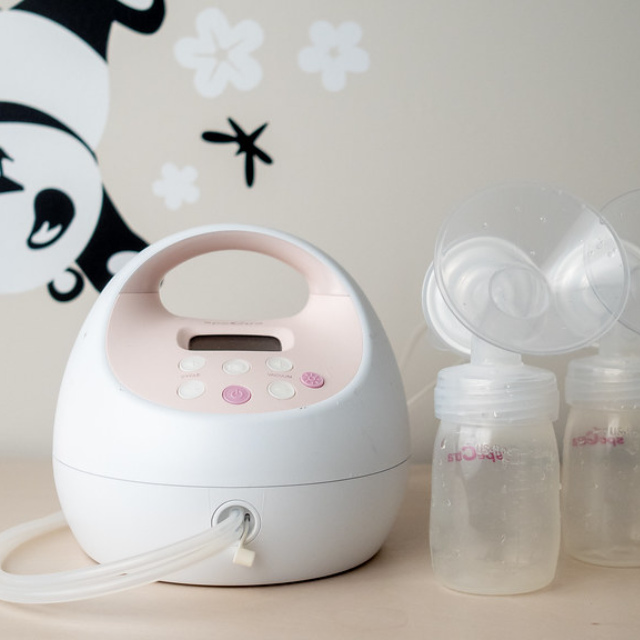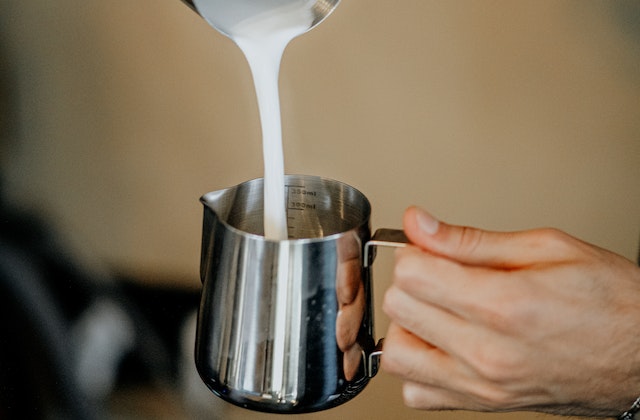
Breastfeeding is the preferred method of feeding newborns, and many mothers choose to pump breast milk as needed. However, some mothers consider pumping before giving birth to have a supply of milk on hand for their newborns. In this post, we will discuss the pros and cons of pumping before birth.
Colostrum, the nutrient-rich milk produced during the first stages of breastfeeding, is often the primary target for mothers who choose to pump before birth. Colostrum can help newborns build healthy immune systems and potentially increase breastmilk production, among other advantages. For newborns with jaundice or low birth weight, colostrum can aid in their recovery.
However, there are drawbacks to pumping milk before delivery, particularly if expectant mothers are unsure of how to do it correctly. Incorrect execution could lead to uncomfortable nipples and, in some situations, unexpectedly early labor. Therefore, it’s important for mothers to consult with a lactation consultant or healthcare provider before attempting to pump before birth.
- When Can I Begin Expressing Breast Milk While Pregnant?
- Colostrum Collection Before Birth
- Advantages Of Breast Milk Pumping Before Birth
- Is Colostrum Harvesting Painful?
- Disadvantages Of Pumping Before Delivery
- Does Breast Pumping Cause Labor?
- Can Colostrum And Breast Milk Heal A Sick Baby?
- What Dosage Of Colostrum Should I Administer To My Sick Child?
- After Giving Birth, Should You Still Pump?
- Which Is Better Pumping And Breastfeeding?
- Bottom Line
When Can I Begin Expressing Breast Milk While Pregnant?

Expectant mothers need to understand when to begin pumping breast milk. While colostrum production can start as early as the second trimester for some pregnant women, it may not begin until after the baby is born for others.
Hand-expressing colostrum can begin at 36 weeks of pregnancy, or 32 weeks for those at risk of premature delivery. It’s important to collect colostrum since it’s highly concentrated and viscous manually, and may only be released in small amounts. In pump machinery, it can be easily lost.
It’s also crucial for mothers to learn proper hand-expressing techniques from a lactation consultant or healthcare provider to avoid discomfort and ensure the safe and hygienic collection and storage of colostrum.
What Is Colostrum Used For?
Your baby will drink colostrum for the first few weeks of her existence. It contains a lot of nutrients and antibodies to fight infections and safeguard your baby. It also aids in their assimilation of how to breathe, swallow, and suck while eating.
Colostrum has the following extra advantages:
- Supports a child’s immune system.
- Protects against the absorption of dangerous germs by coating the intestines for a healthy gut.
- Offers babies the best nutrition possible.
- Simple to digest.
- Decreases the likelihood of newborn jaundice.
- Due to its laxative properties, it helps newborns eliminate meconium.
- Avoids the development of low blood sugar in fully developed newborns.
Colostrum’s main function is to supply your newborn with the nutrients they require throughout the first few days of life. It should be ingested as soon as possible after birth because it is crucial for the health of your infant.
A newborn’s ability to breastfeed is also improved by colostrum. Because it is thick and moves slowly, a newborn has time to practice sucking and swallowing. Due to the small amount of colostrum produced, it cannot be collected using manual or electric pumps.
Colostrum Collection Before Birth
Colostrum is even more advantageous than breastmilk when it comes to nourishing a newborn baby than breastfeeding is. Because of this, many women enjoy gathering and storing this gold milk to use as baby food later. Antenatal colostrum harvesting is the term used to describe this process of preserving the colostrum.
Advantages Of Breast Milk Pumping Before Birth

Colostrum or breast milk can be stored and pumped before delivery for a variety of reasons, including giving your baby the nutrition and antibodies they need to survive. These nutrients are abundant in colostrum, which can help your infant in the early stages of life. The benefits of pumping while pregnant include the following:
- Immunoglobulins, which are abundant in colostrum, the first milk your body makes, help strengthen your baby’s defenses.
- Your baby’s first bowel movement can be easier to pass early on with the aid of colostrum, and it can also help prevent jaundice.
- If you intend to breastfeed, pumping during pregnancy helps prepare your body for the feeling and increases your milk supply. Mothers who opt to exclusively breastfeed, for instance, may choose to express their milk frequently.
- In the first few weeks after giving birth, nursing may be challenging if you have diabetes while pregnant. In this situation, you might want to think about expressing and storing breast milk while pregnant. Babies born with hypoglycemia may require immediate milk feed after birth, therefore stored milk is especially vital for them. He runs a higher chance of developing seizures or suffering brain damage without breast milk.
Other Advantages Include
- A mother gives her unborn child the first vaccination against disease when she stores her colostrum during pregnancy. The baby’s developing gut is supported and protected by this secreted milk. When feasible, breastfeed your baby because formula can often cause issues for newborns.
- In case you need to express breastmilk by hand, later on, pumping your breasts while pregnant can help you get used to it. The efficiency of breastfeeding can be increased by being familiar with hand-expressing methods. You might need to extend your pumping sessions by extra minutes if you aren’t producing enough milk after giving delivery.
- Colostrum may be saved by some pregnant women in case they later have a limited milk supply or have trouble nursing. Women who have had breast surgery, have a history of low milk supply or have health issues that can make nursing challenging should also consider keeping a supply of breast milk in the freezer. Colostrum can be pumped before delivery, giving you the time to accumulate a supply of this priceless liquid gold to aid in your baby’s successful breastfeeding.
- You can pump after delivery if you don’t feel comfortable doing so before giving birth. You can express your milk or collect colostrum with a breast pump, which comes in manual or electric varieties.
Is Colostrum Harvesting Painful?
Some women may experience discomfort throughout the colostrum collection process. But it shouldn’t be painful. You can experiment with altering your finger pressure or posture if hand expressing does indeed induce nipple pain and soreness.
This means that for a more comfortable experience, you might need to adjust your pressure or finger positioning. Speak with your midwife or qualified healthcare expert if you require additional support.
Disadvantages Of Pumping Before Delivery

Pumping breast milk before delivery has both advantages and disadvantages. While it can be beneficial to have a supply of colostrum on hand to help your newborn build a healthy immune system and aid in recovery from issues like jaundice, there are potential drawbacks to consider.
Improper execution of pumping can lead to discomfort and sore nipples, and there is a risk of stimulating the release of oxytocin, which can potentially cause premature labor. It is crucial to talk to a healthcare professional or lactation specialist about proper techniques for pumping before delivery to avoid negative outcomes.
Massage and warm compresses can be used to stimulate the letdown reflex and make the pumping process more comfortable. Additionally, if you have a history of early labor, it may not be recommended to pump before delivery due to the risk of oxytocin release.
If you are considering pumping breast milk before delivery, it is important to weigh the potential benefits and risks and seek guidance from a healthcare professional or lactation specialist to ensure safe and proper execution.
Does Breast Pumping Cause Labor?
Hand expression or the use of a breast pump, whether manual or electronic, can stimulate the nipples and trigger the release of oxytocin. The hormone oxytocin causes uterine contractions, which start labor.
Can Colostrum And Breast Milk Heal A Sick Baby?
Breastfeeding is one of the best ways to help a sick baby recover faster. Breast milk contains antibodies, white blood cells, stem cells, and protective enzymes that can help ward off infections and accelerate healing.
Breastfeeding itself is comforting and offers your child a wide range of health benefits. If you have frozen colostrum, this is a good time to use it. However, if you have frozen colostrum in ice cubes, you will need to thaw and warm it before feeding it to your baby.
Even in small amounts, preserved colostrum is nutrient-rich. According to the American Academy of Pediatrics (AAP), mothers should exclusively breastfeed their infants for the first six months and continue to do so while gradually introducing complementary foods until the baby is at least one year old.
What Dosage Of Colostrum Should I Administer To My Sick Child?

A little goes a long way when it comes to colostrum! The ideal amount is actually produced by most mothers within the first 24 hours, who often only produce approximately an ounce.
A newborn only requires one to one and a half teaspoons of this golden milk every feeding. Therefore, remember to keep any surplus for later.
After Giving Birth, Should You Still Pump?
The decision to continue pumping after delivery is a personal choice for each breastfeeding mother, and it comes with its benefits and drawbacks. Being informed of these pros and cons can assist you in making the best decision for yourself.
For example, if you decide to exclusively pump, you won’t have to deal with sore nipples during the initial weeks following delivery. Furthermore, you have the flexibility to store more milk.
Having an insufficient milk supply is never desirable, so if your baby has difficulty latching due to flat nipples, you may consider pumping for a minute or two before breastfeeding. The suction from a breast pump can occasionally draw out and stretch the nipples just enough for your baby to latch on.
Your baby’s early birth or inability to latch are additional considerations to take into account. If this is the case, you may choose to pump exclusively until your baby can latch properly. In such a scenario, it is recommended that you feed your baby freshly pumped breast milk for most of the day.
If you are unable to do this, you may choose to pump after each breastfeeding session. It is critical to take care of your breast pump, particularly the pump parts, which is something that many mothers overlook.
If you use your pump regularly, ensure that all of the pump’s components are clean.
Which Is Better Pumping And Breastfeeding?
Breastfeeding is undoubtedly the preferred choice for many mothers. It allows for bonding with their babies and is a cost-effective method. However, nursing in public can be uncomfortable, and there are certain challenges and limitations associated with it. Pumping breast milk into bottles is a practical alternative if your baby doesn’t latch onto your breast directly. It can also help prevent your uterus from shrinking too quickly after birth.
Pumping has other benefits, such as lowering your risk of developing breast and ovarian cancer. Additionally, the antibodies in pumped breast milk help protect your baby from germs and viruses. However, it’s important to note that frequent thawing, freezing, and reheating can cause some loss of vitamins and proteins in the milk. As a result, it’s best to feed your baby freshly pumped milk as much as possible.
Dirty bottles and breast pumps can also promote mold and bacterial growth, exposing your child to dangerous conditions. It’s crucial to keep your bottles and breast pump components clean to ensure the safety of your baby.
Can I Safely Pump My Breasts Before Giving Birth?
Although pumping before delivery is safe, doing it too soon can cause serious problems. Women may feel stressed out if they pump before the third trimester. Expressing breast milk too early may cause your baby not to reach full term.
Baby health problems and infections are thus a possibility. Early birth and preterm labor would put the infant’s live in peril. Additionally, following delivery, the breasts do not produce additional milk as a result of breast pumping during pregnancy.
Before delivery, you can even develop nipple sores. Therefore, if you frequently pump before giving birth, talk to your doctor.
Bottom Line
Colostrum plays a crucial role in protecting and nurturing the developing gut of infants, providing them with immunity and essential nutrients for growth and development. Collecting colostrum before birth can help you build a supply of this valuable liquid gold, which can aid in a successful start to breastfeeding for your child.
However, while there are numerous advantages to pumping before delivery, it is also essential to be aware of potential drawbacks. Improper execution or preparation of prenatal pumping can lead to discomfort, sore nipples, and inadequate colostrum production. Pregnant women with a history of early labor should also consult their doctor or a lactation specialist as oxytocin release during colostrum expression may induce or hasten labor.
It is important to discuss your options with your healthcare provider to ensure safe and effective colostrum collection. They can guide how to properly pump milk before delivery, as well as offer additional support and information to help you make an informed decision.
Leave a Reply
You must be logged in to post a comment.